Edward Bach: the founder of modern flower essences
Introducing Flower and Vibrational Essences
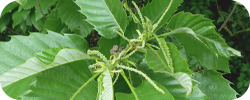
Edward Bach was the originator of modern flower essences. He developed a remarkable yet simple system using 38 remedies. He therefore holds a very special place in the amazing range of vibrational essences we have available today. Most people are aware of Rescue Remedy even if they do not know of the full Bach Flower range.
Edward Bach was the originator of modern flower essences. He developed a remarkable yet simple system using 38 remedies. He therefore holds a very special place in the amazing range of vibrational essences we have available today. Most people are aware of Rescue Remedy even if they do not know of the full Bach Flower range.
A brief history
Edward Bach was born in Moseley, a leafy suburb of Birmingham on 24th September, 1886, the eldest of three children. His family owned a brass foundry. Bach was by account a sickly baby but his health improved and he had an active and happy childhood. However his underlying frailty was to become a significant factor in determining the course and direction of his life. He had a great passion for nature and spent much of his childhood holidays hiking and camping in Wales. His compassionate nature and his strong desire to help alleviate suffering, even as a child, led him to enter the medical profession. After a brief spell working for his father and then in the Worcestershire Yeomanry he asked his parents to support him through medical school and at the age of 20 he entered Birmingham University and completed his training at
University College in London.
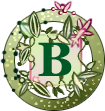
y all accounts Edward Bach was a ‘workaholic’. He had to supplement his father’s allowance with additional work and he also spent many hours on the wards as a medical student observing patients and the effects their treatments had on them. He was dissatisfied even at this early stage with the efficacy of conventional medicine and at the level of pain suffered and had noted that not all diseases responded equally to the same treatment and that patient personality appeared to be a factor.
Ill health bedevilled him at this stage and even when he held the posts of Casualty Medical Officer at UCH and Casualty House Surgeon at the National Temperance Hospital he had to leave within a short while due to health issues. He set up a private consulting room near Harley St. and he was a popular and successful physician, and although he cured many patients he became increasingly dissatisfied with orthodox medicine which led him to seeking an alternative. He took the post of Assistant Bacteriologist at UCH hoping that this new branch of medicine would provide the answers he needed – which it did.

ach noted that in the case of chronic illness certain bacteria were present in the intestines in increased quantities, and he found that by injecting them into the patient’s blood stream that not only general health improved but that chronic conditions such as arthritis, rheumatism, head aches etc. were cured. In addition he also discovered that by injecting only when the condition started to reappear or had ‘plateaued’ the results were as successful with the added benefit of less discomfort for the patient. This work would eventually lead to the development of the Bowel Nosodes still used in Homeopath today.
At the outbreak of World War I in 1914 Bach tried unsuccessfully to sign up, but instead was put in charge of 400 war beds at UCH in addition to his research work. In July 1917 he collapsed with severe haemorrhage and had emergency surgery for cancer of the spleen. It was thought that even if he survived the surgery that his life expectancy would be less than 3 months. His overwhelming desire to continue his life work almost certainly enabled him to make a very long, slow and painful recovery. He amazed his doctors and as soon as he could walk he was back at his research desk in his laboratory frequently working long into the night.
 It was this remarkable recovery that formulated one of the major principles of his flower essence system – that in order to be healthy and happy one had to have, and be able to fulfil, a definite purpose. He believed that this was a fundamental principle of soul development, which he believed is our purpose in life, and that he had recovered because he knew overwhelmingly what his purpose was.
It was this remarkable recovery that formulated one of the major principles of his flower essence system – that in order to be healthy and happy one had to have, and be able to fulfil, a definite purpose. He believed that this was a fundamental principle of soul development, which he believed is our purpose in life, and that he had recovered because he knew overwhelmingly what his purpose was.
Edward Bach continued his work at UCH and his own private consultancy until 1918 when UCH decided that all employees would not be permitted any private work. He handed in his notice immediately and set up his own laboratory (to further his researches into intestinal toxaemia) together with consulting rooms in Nottingham Place, W.1. He was still dissatisfied that some disease did not respond to his vaccine therapy, and that diagnosis rates were both poor and slow and felt there had to be another way of treating disease.
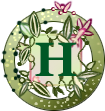
e took up the post of pathologist and bacteriologist at the London Homeopathic Hospital in March 1919 and it was there that he was introduced to the work of Hahnemann, the founder of homeopathy. He was deeply impressed that over 100 years ago Hahnemann had devised his brilliant healing method on the basis that ‘like cures like’ and that frequency of treatment should be dictated by improvement in symptoms, both of which he had found in his own work. Hahnemann’s founding principle of ‘cure the patient not the disease’ was entirely in accord with Bach’s own beliefs and here he found the affirmation that he required. This principle was to become the basis of Bach’s own ‘herbal’ system.
Hahnemann had proposed that there were three basic poisons in the intestinal tract that had to be eliminated in order to be able to treat chronic disease, namely syphilis, sycosis and psora. Little was known as to what psora was but Edward Bach came to realise that it appeared identical to his own theory of intestinal toxaemia. He then started to prepare his vaccines to a homeopathic prescription with excellent results. Classifying known gut bacilli according to fermentation patterns with sugar he arrived at seven groupings – these became the Bach and Wheeler bowel nosodes still in use today (developed with Dr Charles Wheeler). Edward Bach then started to work out the ‘mentals’ – personality type that corresponded to the seven nosodes and he formulated seven distinctive types. These were to become the basis of the Groups in the Flower Essences. He confirmed his definitions by treating to the personality type with results beyond his expectations.

ach’s fame grew and his work extended at the London Homeopathic Hospital. In addition he was in demand at his clinics in Harley St, and also Nottingham Place where he treated the poor for free. The pressure on his time grew to the extent that he gave up his post at the LHH to spend more time on his bowel nosode research. In 1926 he published a book ‘Chronic Disease: A Working Hypothesis’ with Dr Charles Wheeler which stirred considerable interest from the medical profession – both allopathic and homeopathic – and this increased the use of his nosodes. Despite the success of the nosodes Bach was still dissatisfied and wanted to find plants (herbs) to replace them. He managed to find three plants whose action was similar to that of the bacteria however they were not able to give the results obtained from using the intestinal bacteria.
Between 1928 and 1930 came the breakthrough in part that Edward Bach sought. He gave increasing attention to the seven personality groupings realising that there were additional personality types that eventually he would sub-group under the original seven. Having potentized many plants without the results he desired, he felt a strong urge to visit Wales in September 1930 and found there the first three of the 38 remedies – these were Impatiens, Water Violet and wild Clematis. 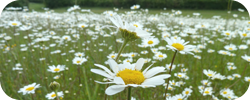 These three finally gave him the results he desired – that he could replace the nosodes with herbs and he began treating with these three alone linking them to the personality types.
These three finally gave him the results he desired – that he could replace the nosodes with herbs and he began treating with these three alone linking them to the personality types.
He was so convinced by the results that he knew he was on the verge of finding a new system of healing and so in the Spring of 1930 to the surprise of his friends and colleagues he gave up his practices, dividing them between his friends and colleagues, and dismantled his laboratory in London to find the healing that he knew was given by plants and trees. He had also realised by this time that he could heal by laying on of hands.
He left London in May 1930 to travel to Wales. He had very little money as he had invested his considerable income in his research. He was 43 at this time but his exuberance and vitality apparently made him appear far younger. He had no plans but to look for the plants that he needed – his ethos was that everyone deserved good health and that it was a divine calling to be able to give it. He didn’t charge for his services and although he had considerable privation he truly put his faith in the Universe to provide – which it always did in sufficiency for his needs!
Finding the first 19 remedies – The Twelve Healers and Seven Helpers
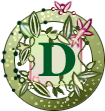
uring the three months of his stay in Wales from May to July 1930 Edward Bach arrived at two important conclusions which were to determine the preparation of his remedies. He decided that although there were many herbs that could alleviate conditions he knew that the plants that he had to discover had to have a special quality of being able to cure rather than being just palliative. He also became aware that dew or water droplets held in the flower head in full sunlight could absorb the properties of the plant.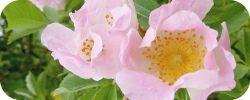
Collecting dew was too time consuming so he achieved the same result by placing flower heads in a thin glass bowl filled with spring water. He found the results to be very potent and concluded that the sun’s power was fundamental to the preparation. His first nineteen remedies were to be prepared by this method.
He made careful observation of plants determining their habitat and growth, but he found that he was becoming increasingly intuitive and that he was able to determine the nature of a plant and its healing properties if he held the bloom or petals of a plant in his palm or placed it on his tongue.

e felt that finally he had discovered a new method of healing, given divinely through plants and in tune with the four elements. It was towards the end of this period that he wrote the manuscript for his book ‘Heal Thyself’. This book explains his ethos and understandings and was to explain his new healing method. He believed that instincts and intuitions were the means of communicating with man’s Higher Self and that they should be followed to have a life of health and happiness and therefore to be able to achieve the soul’s purpose. When these were blocked then the mental states, which he initially identified as twelve, would eventually lead to physical ill health. Eventually he formed seven groups with sub-divisions for his final 38 remedies.
Bach took the manuscript to London but he could not find a publisher. Distressed and without the means to publish it himself he took the manuscript and went to Cromer, Norfolk in the August of 1930. It was here that he made close observation of people and confirmed to himself that the moods and state of mind of different personality types would ultimately cause disease and therefore required specific remedies. In other words cure could only be achieved by the removal of the cause, but importantly the outcome was determined by the individual’s desire to become well.
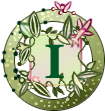
t was during August and September of 1930 that Bach found seven of the plants to give him in total 9 of 12 of the remedies that he was to call the Twelve Healers. Over the winter he stayed in Cromer dispensing his remedies and published his findings in The Homeopathic World. Many patients appeared on his doorstop both local and some travelling considerable distance to see him. In February 1931 he finally managed to get Heal Thyself published and later that year found 2 further remedies. He now had 11 remedies and returned to Cromer for the winter of 1931. At the request of friends he returned to London in 1932 and set up a consulting room in Wimpole St. His fame had spread and he was under considerable pressure. During that time wrote a small book called ‘Free Thyself’. After two months his health became affected and left he for Kent where he found the last of the first 12 remedies and then returned to Cromer for the Winter of 1932.
During this time he tried to publish several papers in the Medical Press but they were refused and he decided to place advertisements in the larger daily newspapers. Two papers agreed to publish in the face of disapproval from the General Medical Council who had previously threatened to remove his licence to practice. The GMC now threatened to remove his licence on the basis that the adverts had been placed to procure patients. Bach denied this claiming that it was the herbs, their healing power and ease of use that he wished to bring to the public’s attention. The GMC made further threats but took no further action until 1936.

n order to free himself he left Cromer in January 1933 and travelled to Eastbourne and then Marlow without leaving a forwarding address. By Easter his whereabouts had been discovered and he was inundated with patients again. By now he had published The Twelve Healers, which described the remedies, their preparation and dosage instructions. He sold this at 2p a copy (pre decimal) so that it was affordable but frequently forgot to collect any money for it. He returned to Cromer and stayed until February 1934 and in that time found 4 further remedies (including Rock Water the only non-herbal remedy) that he called the four helpers. These he felt would be for those that had lost all hope of ever becoming well again. He published ‘The Twelve Healers and Four Helpers’ in the Autumn of 1933, but he determined that he required a further 3 remedies for particular types and states of mind which he sourced and prepared. It was at this time that he started to combine three remedies Rock Rose, Clematis and Impatiens which he called Rescue Remedy. He was later to add two further remedies, Star of Bethlehem and Cherry Plum, to give the famous Rescue Remedy that we have today.
In March 1934 Bach decided to leave Cromer to be nearer to London and his friends, colleagues and patients and found a house called Mount Vernon in Sotwell, Berkshire where the Edward Bach Centre still is today. He revised and published The Twelve Healers and Seven Helpers in July 1934. Soon his patients managed to track him down once more and he started to visit London once a week in order to see patients as well as practising in Sotwell. He trained three lay helpers in order to manage his work load but the pressure he was under started to once again affect his health.
Finding the last Nineteen Remedies
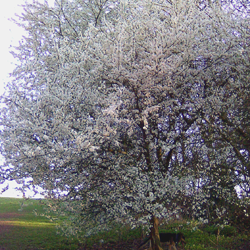 Edward Bach came to realise that further remedies were required and in March 1935 he made the first Cherry Plum. These further 19 remedies took on a rather different form in that all except two were made from trees using the flowers and that 16 of the 17 tree remedies were made using the ‘boiling method’ rather than potentizing using the sun. The flowering sprigs were simmered for an hour then the liquid cooled, strained and stabilized
Edward Bach came to realise that further remedies were required and in March 1935 he made the first Cherry Plum. These further 19 remedies took on a rather different form in that all except two were made from trees using the flowers and that 16 of the 17 tree remedies were made using the ‘boiling method’ rather than potentizing using the sun. The flowering sprigs were simmered for an hour then the liquid cooled, strained and stabilized
with brandy.
He had apparently become so sensitive by that time that he was guided to the remedies by developing debilitating physical symptoms as a result of the mental state that required a specific remedy to heal.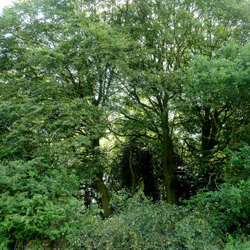
This put a great strain on his hea- lth and additionally he apparently he had even begun to experience his patient’s symptoms before he treated them
By August of 1935 he had completed all of the last 19 remedies and published his findings in the form of a pamphlet that he inserted into his publication The Twelve Healers and Seven Helpers. His fame as a healer and healing method continued to increase. Apart from treating patients directly many people came to him to be instructed in his method of healing and he received letters from abroad from people who were getting excellent results with his methods.
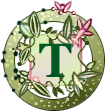
he General Medical Council once again threatened him in January of 1936 informing him that he was not allowed to send unqualified assistants into patients’ homes to treat them and that he would be struck off. He responded
by informing them that he would continue to work with his assistants and that he felt it was his duty to continue treating the sick and teach them to heal themselves and that it was at their discretion as to what action they took. He did not hear from them again! He apparently preferred to be known as a Herbalist rather than a physician.
He wrote and published his final version of his book The Twelve Healers and Other Remedies in September 1936 and he had planned a lecture tour with his assistants. He gave his first address on 24th September 1936 his fiftieth birthday in Wallingford, but sadly towards the end of October his health began to seriously fail and he was unable to work and delegated clinics, the lecture tours and the large amount of correspondence to his trained assistants. He died in his sleep on 27th November 1936.
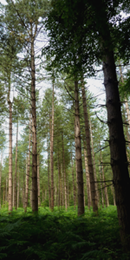

e left very few notes destroying most of them, and his message as he wished it to be given is contained in ‘Heal Thyself’ which contains his beliefs and philosophy and ‘The Twelve Healers and Other Remedies’ which classifies the 38 remedies into seven broad groups of identifiable emotional states with 38 subdivisions in total, each with a remedy assigned to it. He wanted his herbal system to be simple and accessible to all.
 Following his death
Following his death
two of his assistants Nora Weeks and Victor Bullen continued his work and promoted his healing system and we have them to thank today for the knowledge they have passed on and for keeping this remarkable system very much in vogue.